Sujebi is a fun hand-pulled or hand-torn noodle soup. Fresh easy home-made dough makes this an incredibly comforting dish that reminds me of my mom’s cooking – always! ❤️
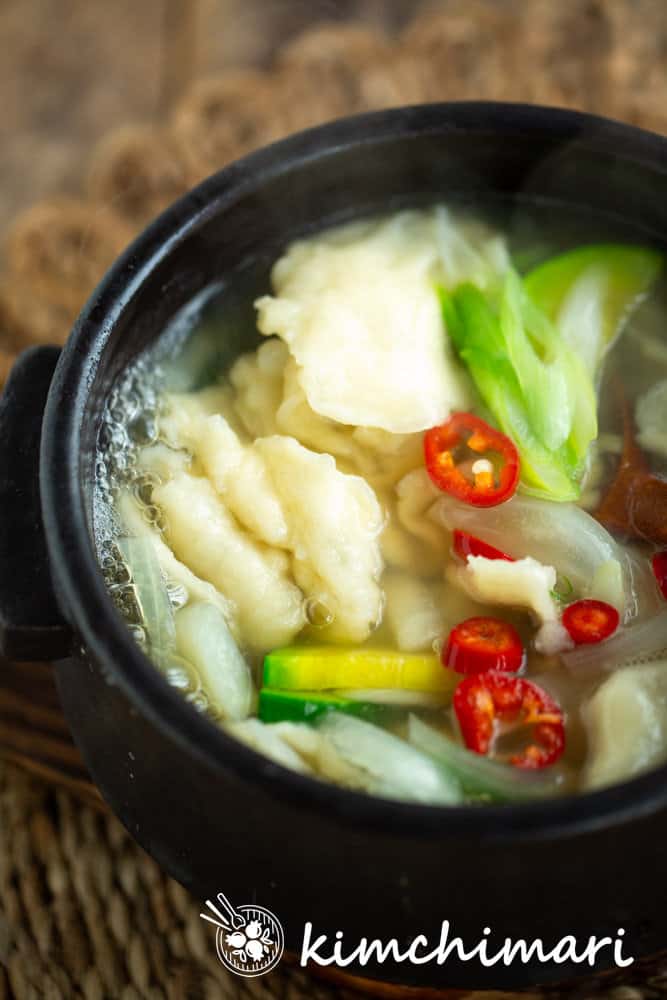
What is Sujebi 수제비
Sujebi is usually called a hand-pulled or hand-torn noodle soup in English but in my opinion I think it should be called want hand-torn and stretched noodle soup 😝. I couldn’t find any historical background on how this dish came to be or got its name but one possible explanation is that it may have come from the word Sujeob 수접 where Su 手 means ‘hand’ in Chinese characters and Jeop 摺 which means ‘to fold’. So when put together it means ‘hand folded’ and thus a theory says it went from 수접이 (SuJeob-yi) to 수제비 (Sujeobi). But that’s just one theory…
If you love Kalguksu then you will LOVE Sujebi. The flavors of the broth are quite similar (anchovy broth based) but the noodle part is thin noodles vs flat and wide pieces of dough which I think makes it more fun to eat. No 2 pieces of Sujebi are the same!!
background history
Koreans love to have a bowl of Sujebi on a cold day or enjoy making a pot of it at home. I remember watching it being made and was just amazed how my mom or aunt could continue to stretch out the dough on top of a hot pot of broth.
As you may know, wheat flour was called ‘gold powder 금가루’ in the old days as wheat was not grown in Korea and whatever existed was imported. So only the very rich people got to enjoy foods made with wheat flour. But with the Korean war, flour became widely and cheaply available to everyone due to the US military who distributed them to poor Koreans who didn’t have much food to eat.
Because of that, after the war, Sujebi has become a poor man’s food and for many years, it was a dish that was never served to guests but only enjoyed as easy casual food among family members or very close friends. Recently, there are restaurants that specialize in this dish but it is still considered a very humble food overall.
Different Kinds of Sujebi
Although by no means is this a complete list as each family have their own special version but in general the following are what most people will recognize or understand
Gamja Sujebi 감자수제비 – potato (gamja 감자) is added to make the broth extra rich and flavorful. I do add potato to my recipe but not a whole lot. If you love potato then go ahead and add more!
Hangari Sujebi 항아리 수제비 – the lovely torn noodle soup is served in a hangari (항아리 clay jar or pot). So this is not a variety but it has more to do with how it’s served. Although I believe a restaurant in Insadong started serving and calling it this way and it became famous throughout Korea. This method of serving keeps the temperature HOT longer which is the best way to enjoy it.
Spicy Sujebi 얼큰 수제비 – Gochujang or Kimchi Sujebi are some names that come to mind. Spicy ingredients like gochujang or Kimchi is added to the broth to add a red color and a spicy kick.
How to make Sujebi Video (4 min – narrated)
Step by Step Instructions
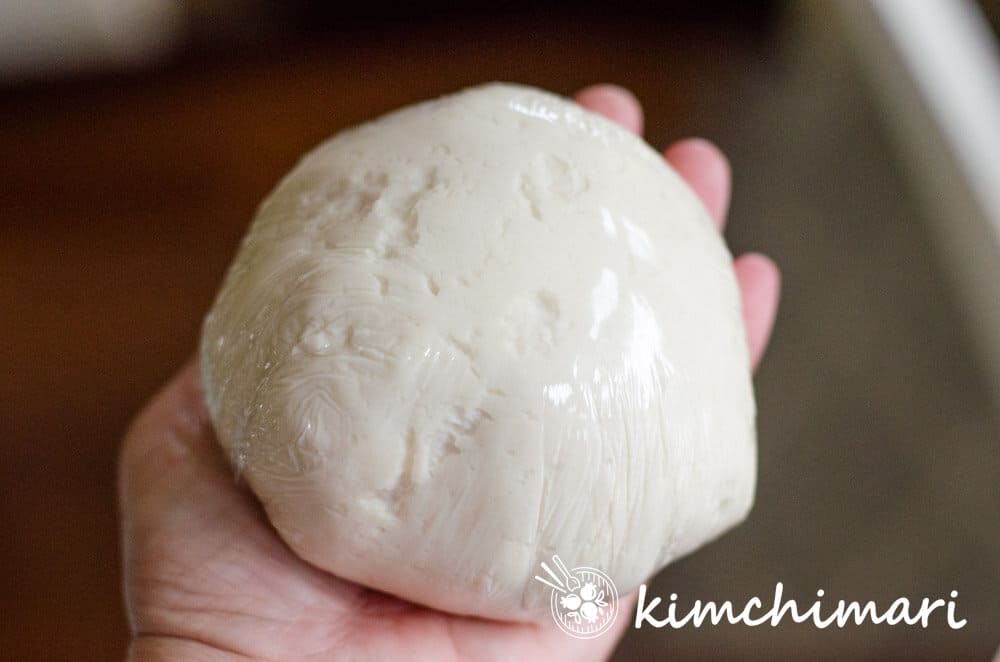
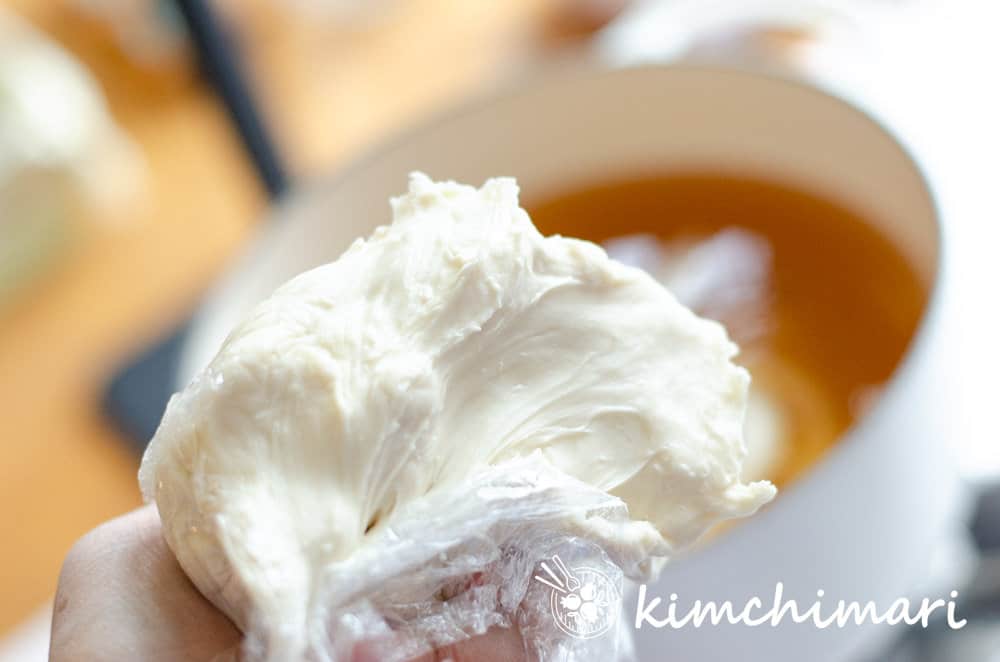
- DOUGH – mix flour, salt and water. Form a ball and then knead into a dough ball. You can use a stand mixer or a bread machine to make the dough if you’d like. But please do finish with some hand kneading to make sure everything is well mixed and the dough is smooth and even.
- Let the dough rest by wrapping in plastic wrap or bag while you make the broth and prep the ingredients. If you are not going to use the dough right away, you can also refrigerate up to a day to use.
- BROTH – In a pot, add water, dried anchovies, kelp and simmer uncovered for 30 min to make anchovy broth. Alternatively, you can use chicken broth or seafood broth.
- Peel potatoes. Cut potatoes and zucchini into 1/4 inch thick slices and then into smaller bite size pieces. Cut onions into 1/4 inch thickness too.
- Chop green onions, garlic and slice or chop red chili pepper.
- OPTIONAL – make yangnyeomjang (spicy soy sauce) if you like things strongly seasoned. Just follow ingredients list and mix everything together and let it sit for few minutes so the Gochukaru has time to bloom.
- LET’S COOK IT!
- Remove dried anchovies and kelp from the broth and season with salt and guk ganjang.
- Add onions, potatoes and zucchini to pot with broth and bring to boil.
- While the soup is coming to a boil, prepare a small bowl of water and the dough next to the pot with veggies.
- As soon as the soup starts to boil, reduce heat to simmer then tear out a small thumb size amount of dough. Then hold dough with one hand and wet the fingers of the other hand and start stretching out the dough between your fingers while wetting the dough. The dough will stretch out really easily once it’s wet enough. Don’t be afraid to dip your fingers again in water if you feel you need more. Stretch out the dough until it feels like you can almost see through it (at least the thinnest part of the dough). Then drop the dough into the pot and start again. Don’t feel like you have to get it perfect, just thin enough.
- Continue to tear and stretch the dough into the pot until you add all the dough.
- Cook for a few more minutes until the sujebi pieces are fully cooked – when they become somewhat translucent. The great thing about sujebi is that it doesn’t overcook too easily but if you cook too long, the broth will start to get cloudy.
- Serve in a bowl or if you made it in a Ttukbaegi (stone pot) then you can serve it straight from the stovetop to the table. Top with some sliced red chili peppers and green onions. You can also serve some spicy Yangnyeomjang sauce but if you are going to do that, you should reduce the soy sauce and salt of the broth or add a bit more water.
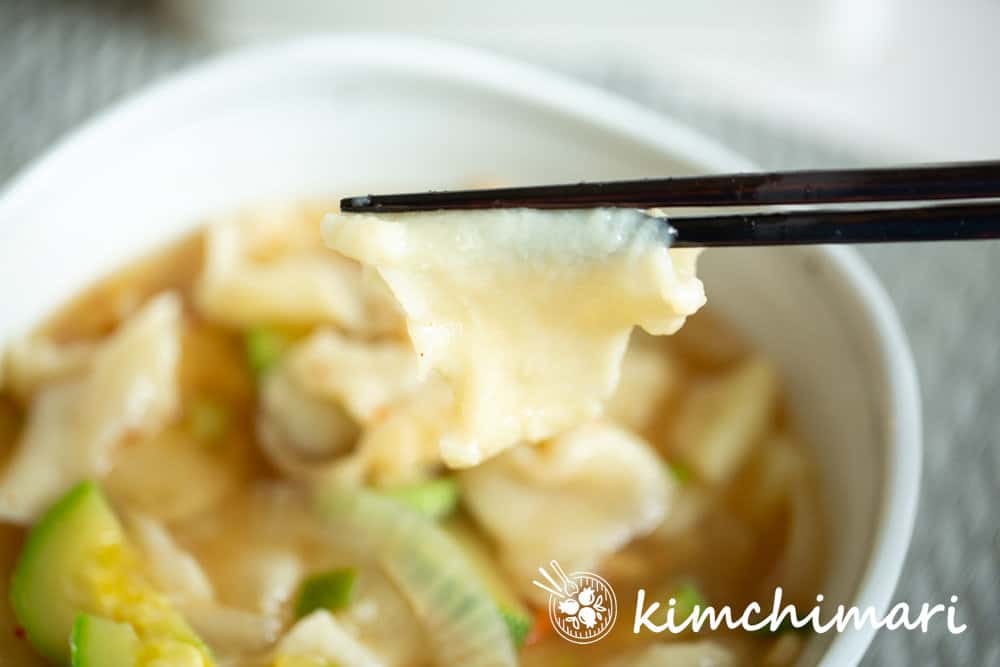
FROM JINJOO!
Tips for Success!
- FIRST TIME Sujebi makers! If you are brand new to making this dish, I would recommend that you don’t add the potatoes and zucchini until you are almost done adding the dough because they may get overcooked if you take too long to tear the noodles.
- Adjust broth seasoning if are making Yangnyeomjang Sauce – If you are going to add the spicy Yangnyeomjang, reduce the salt level of the broth to 1 tsp sea salt and gukganjang (instead of 1.5 salt, 1.25 ganjang). FYI, Sujebi is often eaten without any sauce but I included the sauce recipe in case you want to add some extra kick to your soup.
- Always taste your broth towards the end to make sure it hasn’t reduced too much and is salty. Be sure to have the heat on simmer when adding dough so the broth doesn’t reduce too much.
- Potato is optional – Omit potato for a clearer broth.
- Different Broths – use chicken broth and meat or make seafood sujebi by adding fish/seafood broth to anchovy broth then adding shellfish or squid as you add vegetables to the broth.
- Make dough ahead of time and put in the refrigerator until you are ready to use.
- SERVING SUGGESTIONS – serve in Ttukbaegi (hot stone pot) to keep it extra hot and also for great presentation! And of course, all you need are some side dishes – Kimchi, Cucumber Salad, Myeolchi Bokkeum, Mumalleangi Muchim.
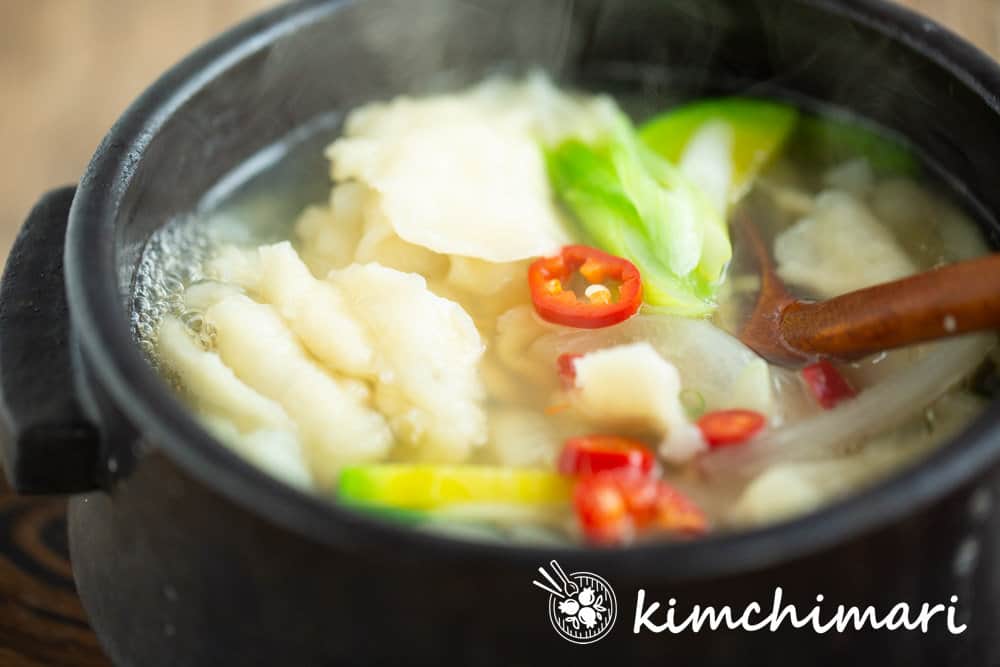
Sujebi (Hand-Pulled Noodle Soup)
Ingredients
Dough
- 2 cups all purpose flour 1 cup = 120g
- 1 tsp sea salt (trader joe's)
- 160 ml water add 1-2 tsp more if you didn't exact weigh your flour
Broth
- 6 cups water
- 1/2 oz dried large anchovies for broth
- 1 piece dried kelp (Dasima) aka kombu
- 1.5 tsp Korean sea salt use less if it's not korean sea salt. also use 1 tsp if using yangnyeomjang later
- 1.25 tsp guk ganjang (Korean soup soy sauce) reduce to 1 tsp if using yangnyeomjang
Veg Ingredients
- 1 each medium russet potato
- 1/2 each yellow onion
- 1/2 each korean aehobak or italian zucchini
- 2 each green onions
- 1 tsp garlic minced
Yangnyeomjang (extra sauce) – optional
- 1 Tbsp Jin Ganjang (Regular Soy Sauce Regular like Kikkoman or Sempio) soy sauce
- 1 tsp Gochukaru (Korean red chili powder) Red Chili Pepper powder
- 2 tsp red chili pepper chopped – substitute shishito peppers (double amount) if you want mild sauce, adjust to your spice level)
- 1 tsp rice vinegar or white vinegar
- 1 Tbsp green onion chopped
- 1/2 tsp sesame oil
- 1 tsp garlic minced
- 1/8 tsp sugar
- 1/8 tsp black pepper
- 1/2 tsp sesame seeds
Instructions
Dough
- Mix flour, salt and water. Form a ball and then knead into a dough ball. You can use a stand mixer or a bread machine to make the dough if you'd like. But hand knead for at least 1-2 min at the end to make sure everything is well mixed and the dough is smooth and even.
- Wrap the dough in plastic wrap and let it rest for 10 -30min.
BROTH
- In a pot, add water, dried anchovies, kelp and simmer uncovered for 30 min to make anchovy broth.
Prep Vegetables and garnish
- Peel potatoes. Cut potatoes and zucchini into 1/4 inch thick slices and then into smaller bite size pieces. Cut onions into 1/4 inch thickness too.
- Chop green onions, garlic and slice or chop red chili pepper.
Make Yangnyeomjang Sauce (optional)
- Make this if you like things strongly seasoned and a bit spicy. Just follow ingredients list above and mix everything together and let it sit for few minutes so the Gochukaru has time to bloom.
LET'S COOK IT!
- Remove dried anchovies and kelp from the broth and season with salt and guk ganjang.
- Add onions, potatoes and zucchini to pot with broth and bring to boil.
- While the soup is coming to a boil, prepare a small bowl of water and the dough next to the pot with veggies.
- As soon as the soup starts to boil, reduce heat to simmer then tear out a small thumb size amount of dough. Then hold dough with one hand and wet the fingers of the other hand and start stretching out the dough between your fingers while wetting the dough. The dough will stretch out really easily once it's wet enough. Don't be afraid to dip your fingers again in water if you feel you need more. Stretch out the dough until it feels like you can almost see through it (at least the thinnest part of the dough). Then drop the dough into the pot and start again. Don't feel like you have to get it perfect, just thin enough.
- Continue to tear and stretch the dough into the pot until you add all the dough.
- Cook for a few more minutes until the sujebi pieces are fully cooked. The great thing about sujebi is that it doesn’t overcook too easily. It will stand a bit of a over cooking.
- Serve in a bowl or if you made it in a Ttukbaegi (stone pot) then you can serve it straight from the stove top to the table. Top with some sliced red chili peppers and green onions. You can also serve some spicy Yangnyeomjang sauce but if you are going to do that, you should reduce the soy sauce and salt of the broth or add a bit more water.
Tips & Notes:
- FIRST TIME Sujebi makers! If you are brand new to making this dish, I would recommend that you don’t add the potatoes and zucchini until you are almost done adding the dough because they may get overcooked if you take too long tearing the noodles.
- Adjust broth seasoning if are making Yangnyeomjang Sauce – yangnyeomjang will add additional salt to your soup so be sure to lower the salt level for your broth if you are going to add the spicy Yangnyeomjang.
- Always taste your broth towards the end to make sure it hasn’t reduced too much and is salty. Be sure to have the heat on simmer when adding dough so the broth doesn’t reduce too much.
- Potato is optional – Omit potato for a clearer broth.
- Different Broths – use chicken broth and meat or make seafood sujebi by adding fish/seafood broth to anchovy broth.
- Make dough ahead of time and put in the refrigerator until you are ready to use.
- SERVING SUGGESTIONS – serve in Ttukbaegi (hot stone pot) to keep it extra hot and also for great presentation! And of course, all you need are some side dishes – Kimchi, Cucumber Salad, Myeolchi Bokkeum, Mumalleangi Muchim.
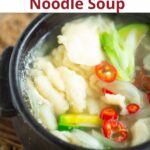
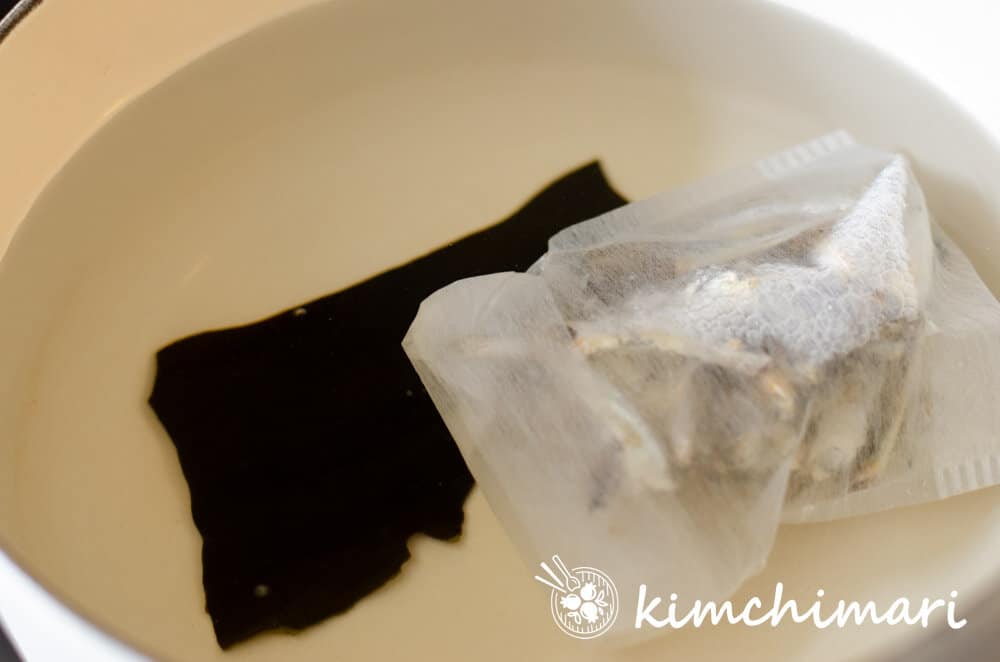
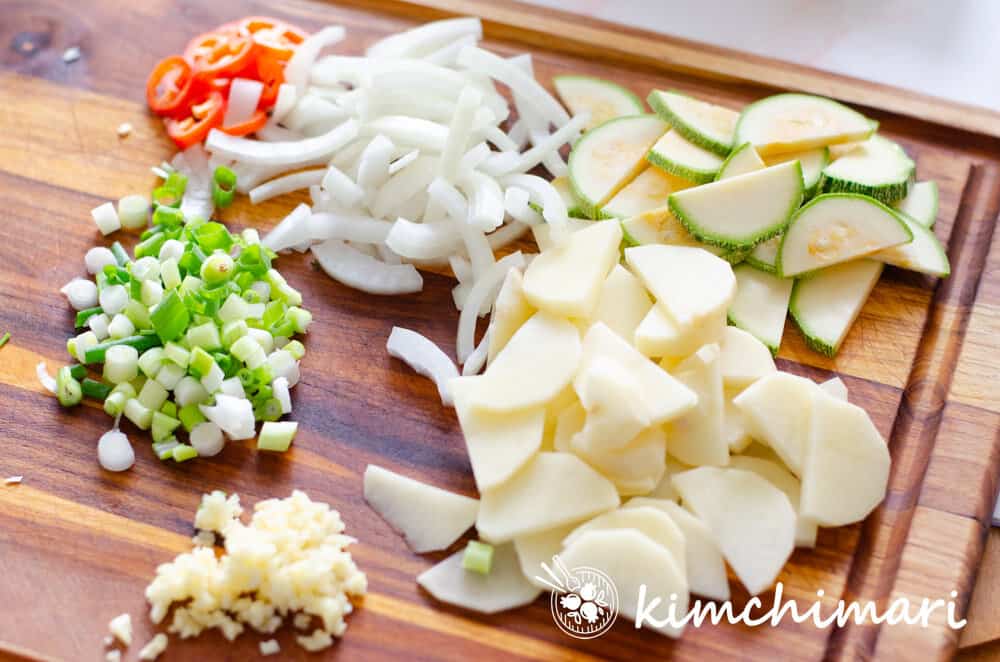
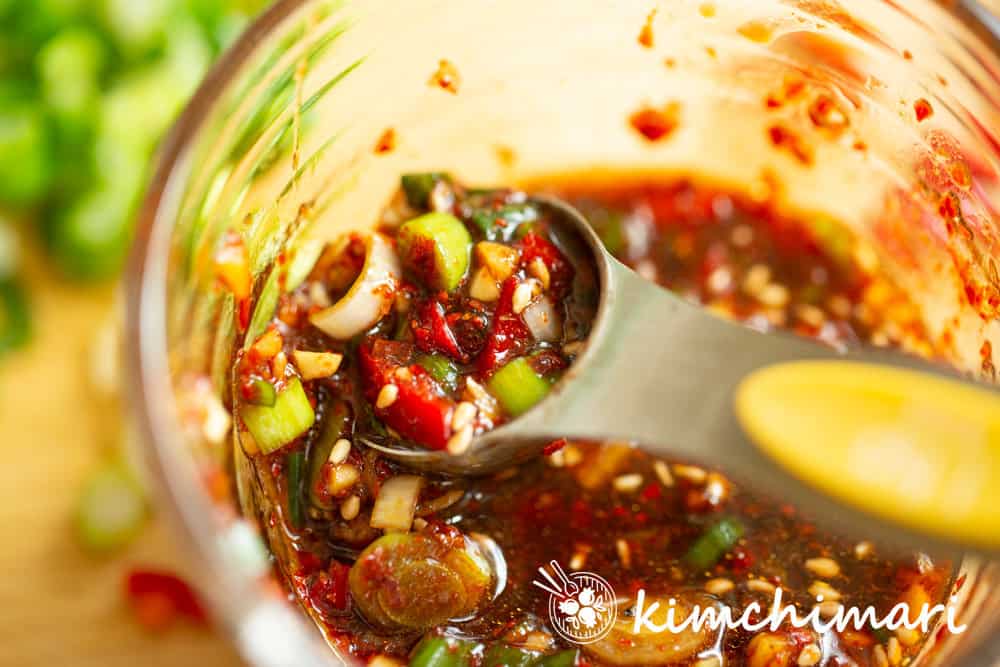
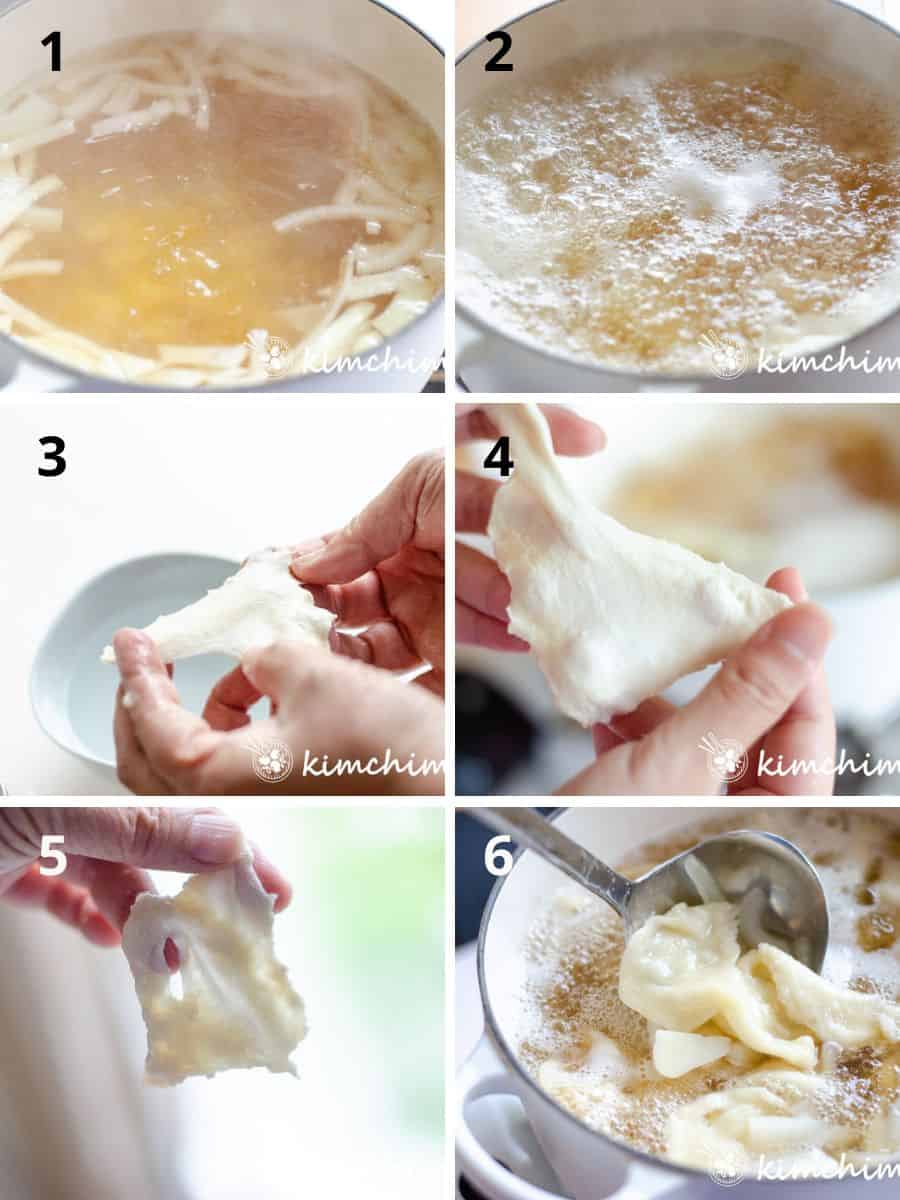

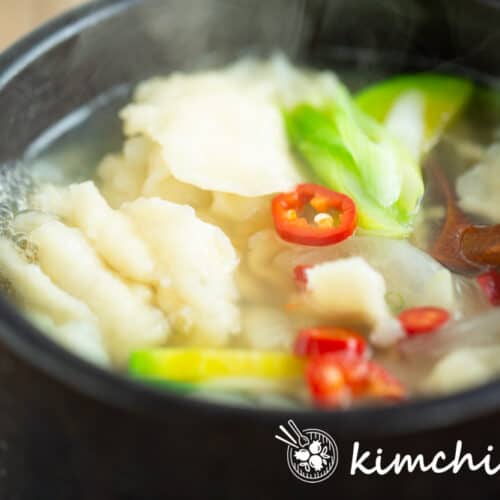
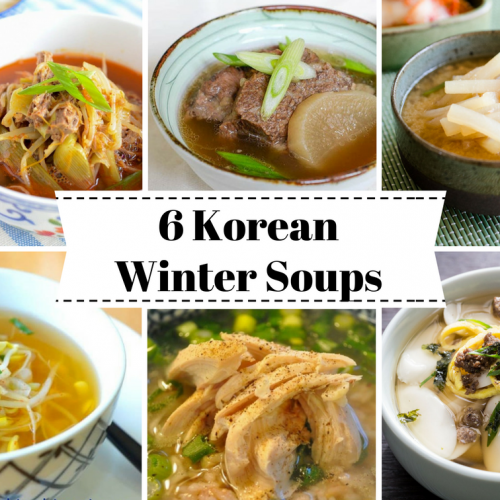
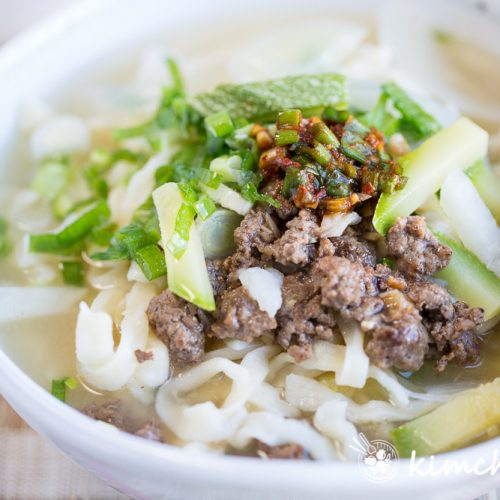
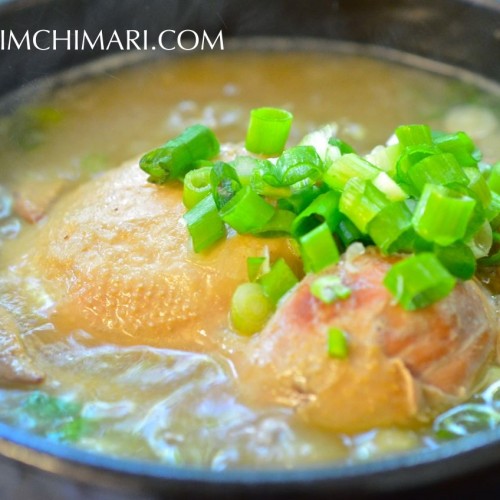
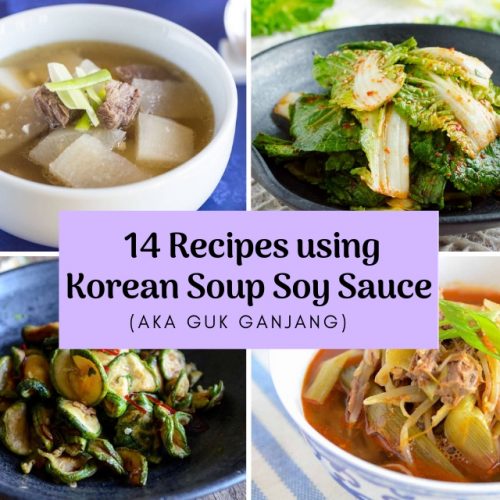
















I love these noodles so much that I’ve even started adding them to Western soups like lentil and bacon instead of suet dumplings. The chewy texture is wonderful. I used to struggle to make regular noodles using a machine, and never really got great results, but these are so quick and easy. I’d never have thought of making noodles this way.
Oh what a fantastic idea but yes it would totally work! Don’t you just love that you can make the noodle as thin or thick as you like it and on the fly?? Thank you so much for taking the time to comment.